Pillars of Eternity Review
A satisfying RPG adventure that brings the genre back to its roots
Obsidian Entertainment has made a name for themselves developing the lesser-loved sequels to some of the greatest games of all time. The company began their history with Knights of the Old Republic 2: The Sith Lords, went on to do another BioWare follow up with Neverwinter Nights 2; they also crafted Fallout: New Vegas, and most recently did the legwork for Matt Stone and Trey Parker’s South Park: Stick of Truth. Thus far, Obsidian got to play in a lot of other people’s worlds and built a strong reputation for themselves, while always playing the role of bridesmaid and never the bride. So when the company struck out on their own with cRPG game Pillars of Eternity, thanks to Kickstarter, it seemed like an interesting opportunity for the studio to make something all its own. I’m happy to say that Pillars of Eternity is pretty wonderful. The game rises above the studio’s previous work, not only paying a dutiful homage to the old Infinity engine games (like Baldur’s Gate), but daring to evolve the tried-and-true formula to keep it fresh in 2015.
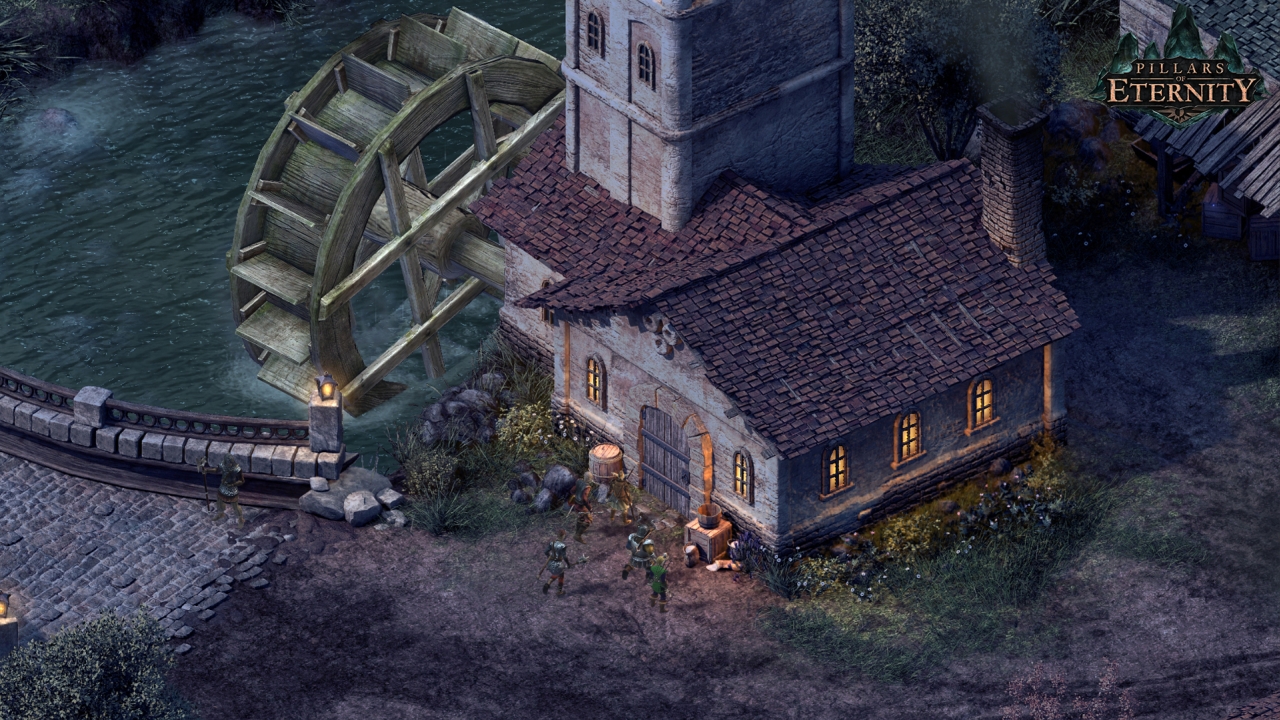
You'll immediately notice that Pillars of Eternity is a very good looking game. While not a spectacle of powerful hardware, Obsidian uses the isometric view to the best of their abilities, creating interesting scenery, whether it is lush forests or ancient ruins. Exploring the world of Dyrwood never gets old as its settings vary enough to continue being engaging after dozens of hours. Its mystical dungeons are both frightening and awe-inspiring. Obsidian shows that you don’t need a 50-million dollar budget to bring a world of fantasy to life. Instead, the company focuses on the details and creativity of their environments to keep the experience visually engaging.
When you’re not enthralled by the game’s marvelous settings, you’ll be swept up by its involved combat. Most RPGs these days lean heavily toward the action side of the genre. Even games like Dragon Age, that can directly trace their lineage back to the old school BioWare games based on D&D rules, have strayed away from the tactical side of the experience. With Pillars of Eternity, Obsidian sets out to bring the genre back to its roots. Pillars doesn’t completely rely on making itself archaic - something that could possibly make newcomers feel left out in the cold. Instead, the game takes the established rules of the RPG and evolves them for 2015.
This one of Pillars of Eternity’s biggest strengths; the ability to be a homage yet feel new, to be challenging but not obtuse. Obsidian could have retreaded the familiar fantasy worlds of other franchises, or they could have copy and pasted the design of the classics line-by-line. But much as table-top games have evolved over the years, so has the cRPGs which seek to replicate the pen-and-paper experience. The abilities, the leveling system, the world, the classes, the combat, all have been reworked in new ways without stealing away any of the nostalgia the Kickstarter faithful hoped for. Walking that fine line of satisfying the old-school niche while creating something new is easily the most impressive thing Pillars of Eternity does.
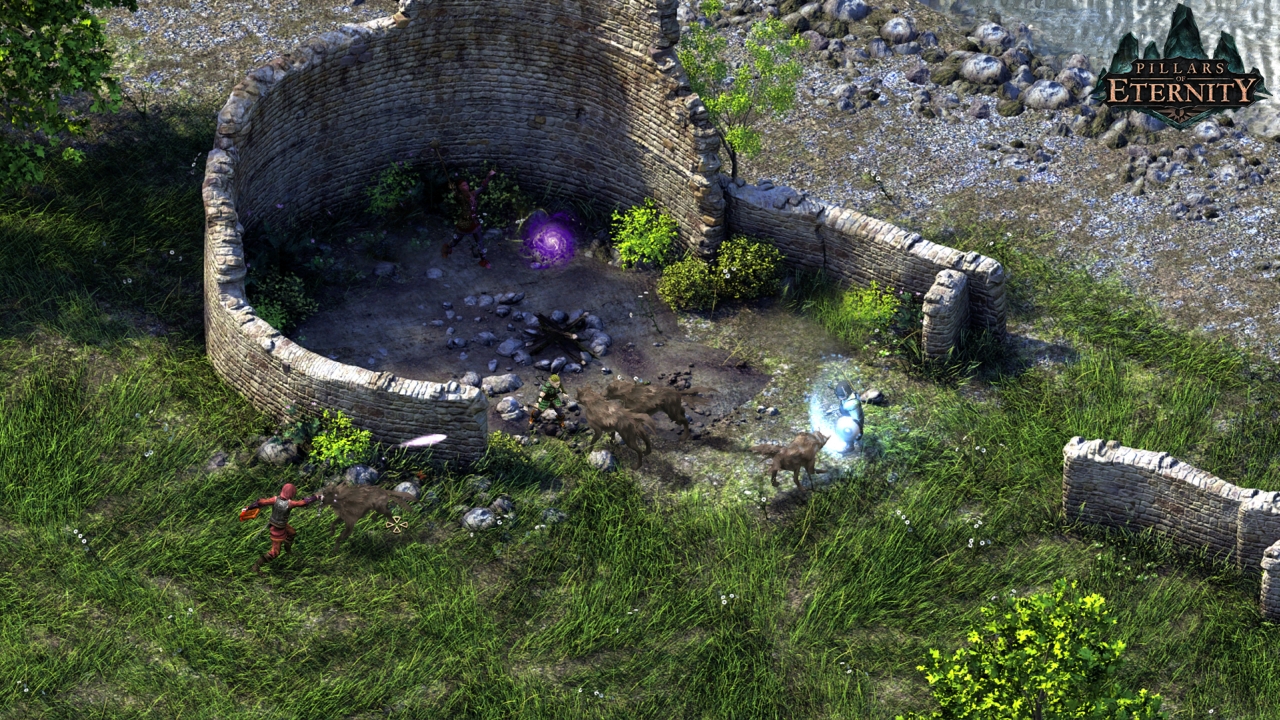
We begin with the character creation screen. While the game might not have the graphical fidelity to allow players to customize their character’s thigh width or the length of their fingers, it puts an emphasis on your background history. I found myself spending nearly an hour reading through the explanations of the homeland and culture you pick for your character. There are some familiar races from fantasy pantheon, like elves and dwarves. But the game also blends in new races, like Aumaua or God-like. Fortunately, the writing is pretty great and it’s easy to get swept up in the world of Eora. In the same vein, the game uses many familiar classes like fighter, rogue, or ranger, but there are also new classes like chanter or cipher, which adds spice to the old standbys of the genre.
Like many of the older cRPGs, Pillars of Eternity is a reading-heavy game. And for the most part, that's a good thing. The lore, politics, and culture fabricated by Obsidian spill from your character creation screen into a sweeping 40+ hour epic. The developers' writing doesn’t exclusively focus on relationships between characters, like many dialogue-heavy RPGs these days, instead the game pushes your attention to everyone’s connection with the world. The many members of your party find themselves in a time of existential crisis; a priest who has lost the favor of his god, a mage who struggles with an internal secret, a rogue who is on a quest they fear will never end. These characters can only partially be helped through your actions or deeds; instead they exist to influence your views on the happenings of Dyrwood and the choices you make to affect it.
Very early in your adventure, the players discover that they are an “Awakened”, meaning you are cognizant of your soul’s previous lives and can see into the souls of others. The past life of your soul sets players on a journey that challenges perspectives on religion and questions the importance of the past. If it all seems a little high concept, it is, but the plot remains grounded enough to keep you engaged. In epic RPGs, it’s sometimes hard for the narrative to keep itself focused on a singular storyline and deliver a cohesive plot, but Pillars does so in spades. The conversations give you pause, not because the game is shoving a difficult decision in your face, but because it gives you interesting elements worth considering. While there are plenty of lengthy conversations, I never felt like the plot was dumped in my lap, but rather laid out in a trail of crumbs. Through my dozens of hours journeying in Dyrwood, I was constantly driven forward by the mystery and the suspense of the narrative, but the questions asked and ideas explored lingered with me afterward as well. A rare feat for a video game.
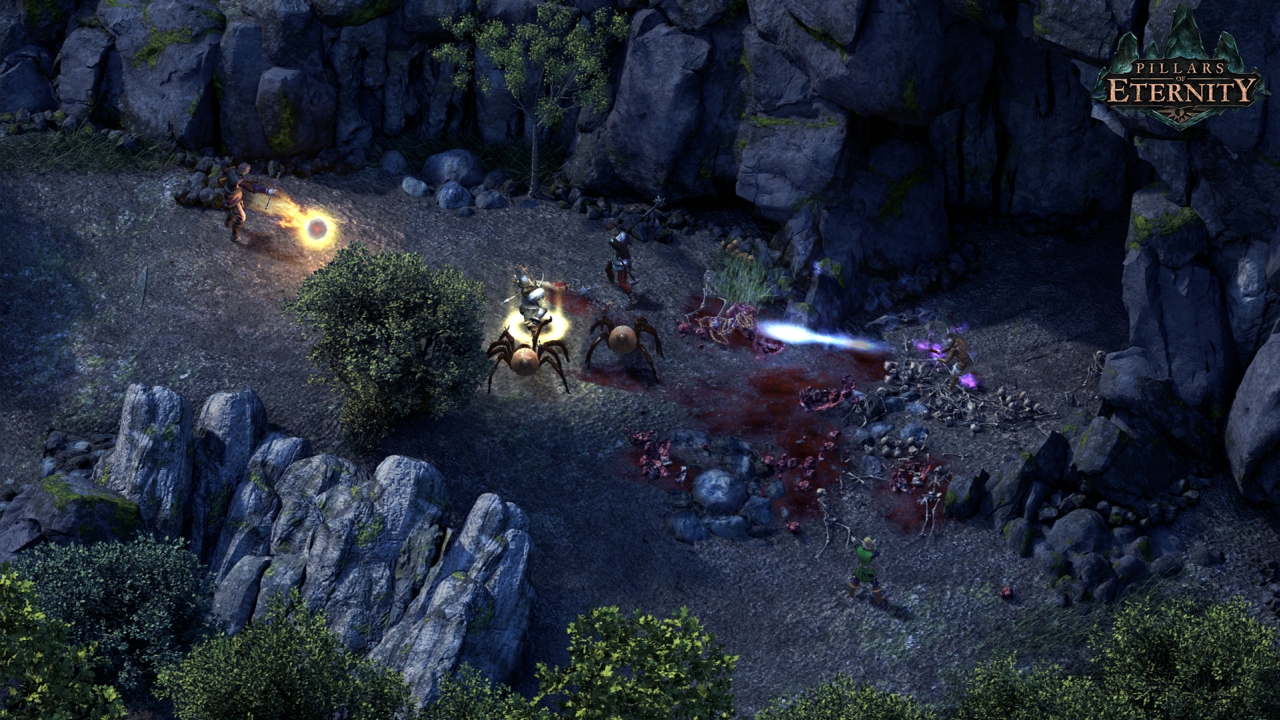
Pillars of Eternity uses their Awakened main character - also referred to as a Watcher - to give their Kickstarter backers a chance to leave their fingerprints on the title. You can find fan writing on the tombstones and epitaphs of the many crypts you explore, but you can also peer into the souls of other characters and see their history. All of these elements were written by fans and they’re of mixed quality, to say the least. Let’s just say it’s easy to tell where Obsidian’s work ends and the fans’ begins.
Make no mistake, Obsidian’s latest effort involves almost as much math as it does words. Fans who love staring at equipment screens, comparing one long sword with another, are sure to get their fill. Luckily, the game makes changing out equipment fairly easy as players can quickly cycle through each character’s screen and hover over items to compare them with what is currently equipped. There’s not a ton of variety to the items you find, making the discovery of rare weapons very rewarding, but there is still tons of loot. Whenever you kill a soldier, you can expect to find their armor and weapons; every mage has a grimore which you can give to your own magic-user in order to learn new spells. You can also collect materials and craft potions or scrolls for your party to use. You can also find hearths, labs, and forges to make armor, enchantments, food and other items.
If you don’t have any use for the items you loot or create, you can sell them to merchants in taverns or specialty stores - like a blacksmith shop. These vendors never run out of gold so you can sell items to them as often as you like. Obviously, this breaks the economy a bit. I made a fortune collecting spare weapons dropped by the average henchman and selling them, which meant I rarely ever found myself low on coin and could purchase anything I wanted, whether it was supplies at a tavern, a room to sleep in, or hiring a companion. If you want to spend hours crafting your own personal wares, you certainly can, but the game doesn’t force anything upon you. Again, one of the strengths of Pillars is not forcing players to get bogged down in elements they don’t find interesting. If crafting isn’t your thing, there’s tons of money to keep you equipped to the teeth with the best gear from vendors.
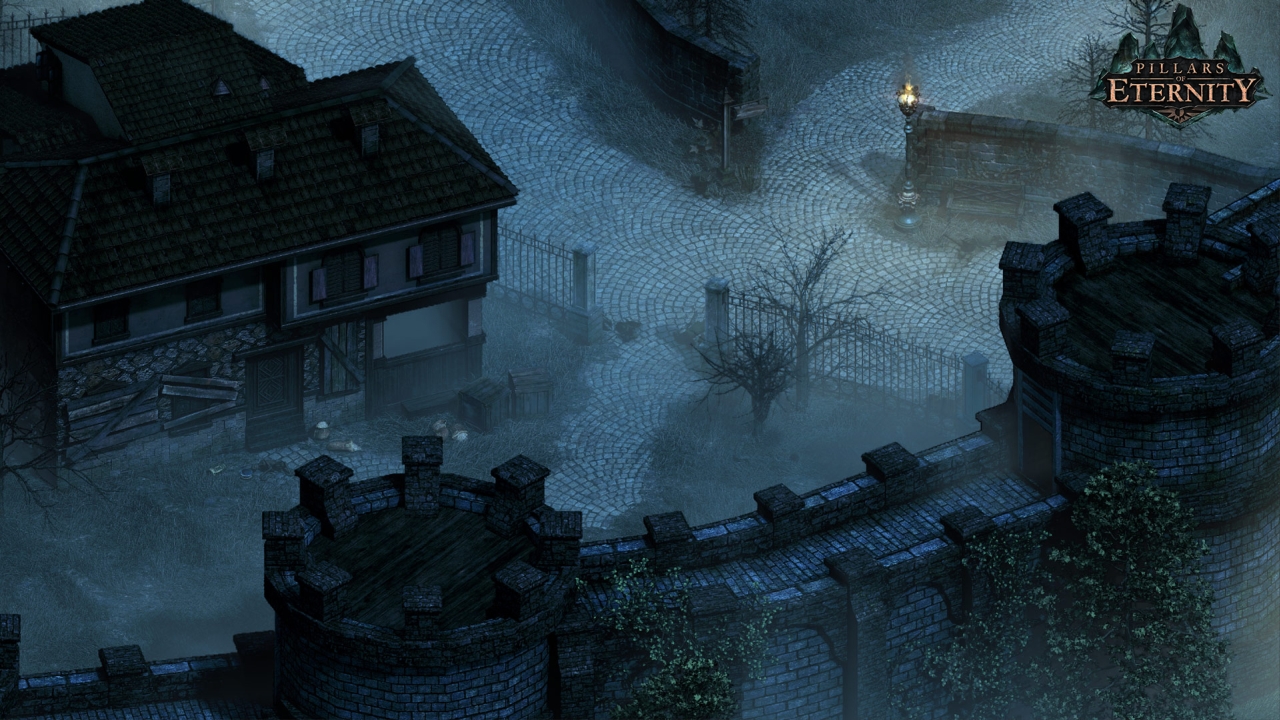
Perhaps the most notable reason to hoard gold is for upgrading of your stronghold, Caed Nua. Much like Dragon Age: Inquisition’s Skyhold, Caed Nua is a castle that falls under your rule through happenstance and becomes your responsibility. The castle is in a state of disrepair and players spend money to make the necessary improvements to turn it into an enviable home. The fortress can also come under attack, forcing you to protect it by hiring soldiers or fighting the battles yourself. Maintaining the keep is mostly busy work, but it’s nice to see the progression of your home and have a place to rest for free. The fortress also boasts a series of underground pathways that hold secrets to the creation of Caed Nua. If you’re ever stuck and need a place to farm some experience, these underground levels are a good way to do so. Caed Nua will also house the extra members of your party when they are not traveling with you. The party members that remain at the stronghold can even be used to carry out special missions.
There are two ways to recruit companions in Pillars of Eternity; you can enlist one of the eight pre-made comrades or you can hire heroes of your own creation. It’s nice that the game gives you the opportunity to customize the party through created heroes, especially since there are ways to miss or dismiss some party members through dialogue choices. If you don’t trust the wizard companion the game offers or you don’t like the druid, you can create generic characters more to your liking. The drawback, of course, is that your custom companions lack the story elements and side quests that pre-made heroes offer. It’s just another way that Pillars of Eternity leaves itself open to custom player experiences.
Some of the side quests for these characters won’t entail dungeoneering or epic battles, but rather intimate conversations and internal revelations. This makes traveling with these heroes all the more important as you never know when they’ll finally let their barrier down and reveal some of their troubling history in an effort to find closure - allowing you to complete their side quest. The nuance and subtlety of these characters is what makes them stand out. I struggled deciding who to leave behind and who to take with me on my next adventure, because they all could have interesting stories to tell during exploration.
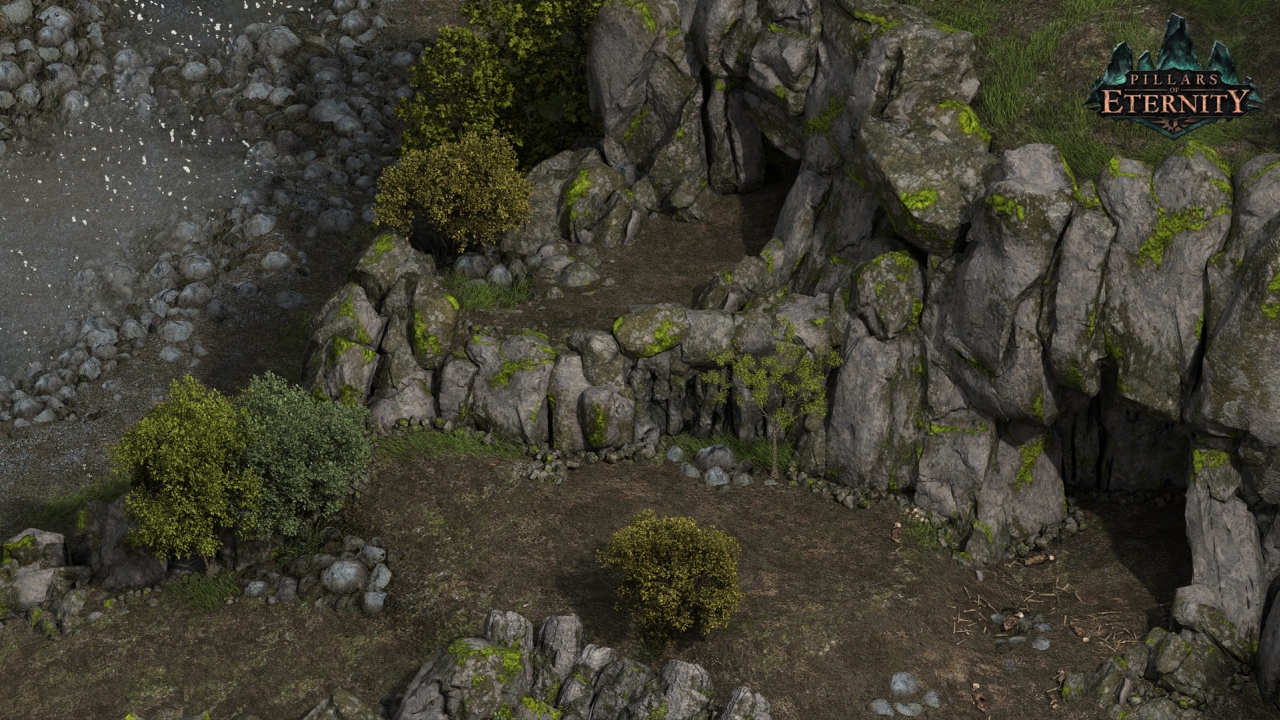
As you complete quests, you and your companions will level up. Obsidian does a great job of picking its battles - no pun intended - and leveling is a place where the developer chose to streamline the experience. Every time a character levels up, players can place points into one of five skills that help improve certain aspects, like the number of spells you can cast or your lock picking abilities. Some magic users can choose new spells to add to their arsenal, your melee characters can pick up an ability or two, but for the most part you won’t be stuck on these screens for too long. It feels like Pillars strikes the right balance with many of these character elements, whether it is equipment screens, leveling up, or dialogue. There’s enough to keep you invested, to emphasize character importance, but it’s rare you ever feel bogged down by these screens.
While some quests can be resolved without bloodshed, there are plenty of times you’re going to have to get your hands dirty. Pillars of Eternity feels unique in its real-time combat, which relies heavily on pausing. While the game internally uses rounds to determine combat, it isn’t always clear when they begin and end. You can also set the game to pause automatically if you don’t trust yourself with the pause key.
Again, Pillars of Eternity doesn’t overwhelm users with its mechanics, but it also doesn’t pull any punches. Wizards, priests, druids, and other magic-based classes require a large amount of micromanaging, even on the easiest of difficulties, but fighters and barbarians don’t need as much hands-on attention. Mostly, players will have to focus on directing their magic-users, and then deciding the best time to strike with their tank’s few skills. Allowing players to let their melee characters auto attack and focus on magic-users lets Pillars be strategic without being overwhelming. Influencing the battle with a good area of effect spell or a well-placed shielding spell can change the dynamic of a fight and rewards good strategy.
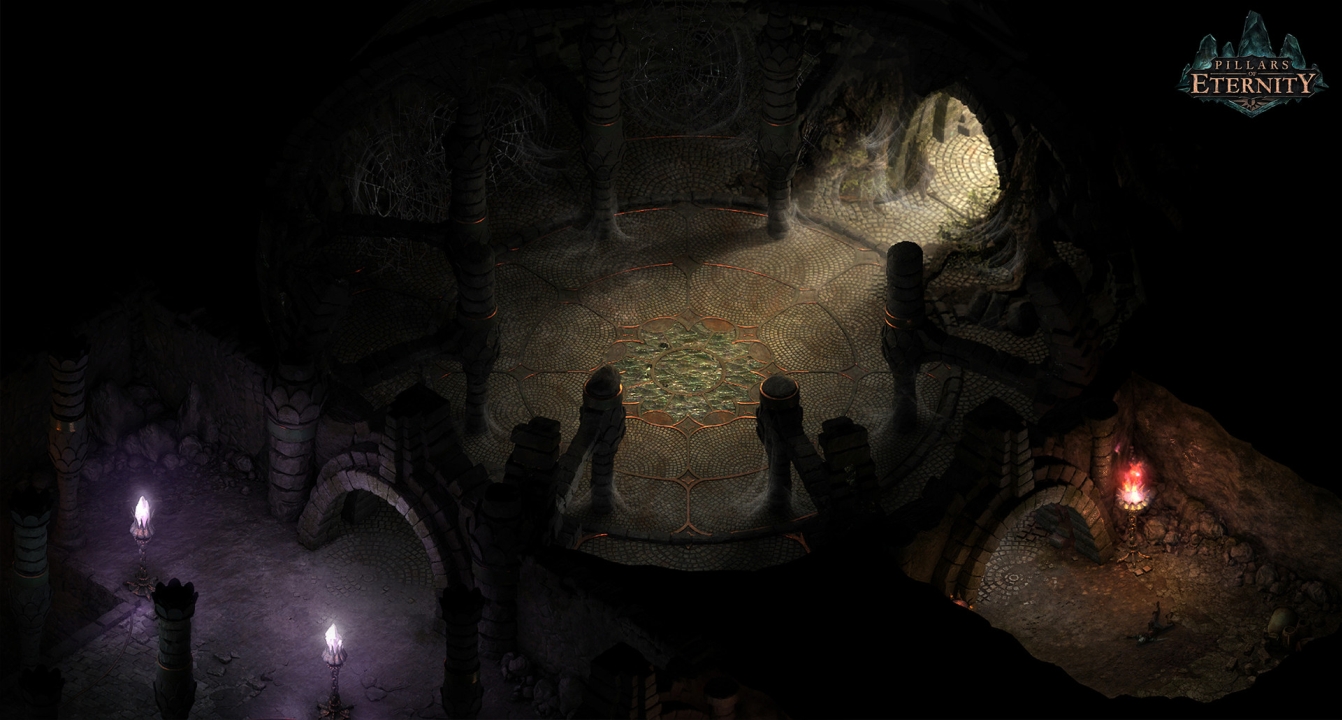
If you really want to be forced to be involved in every aspect of the fight, you can turn up the difficulty. The strategy and management of your party is perhaps the most refreshing part of Pillars of Eternity. As you increase the difficulty, you’ll want to pull melee characters back so they don’t get caught in area of effect spells, you’ll need to keep nasty enemies at bay while your magic-users deal with crowd control; you’ll be forced to keep certain characters clumped together to use healing spells, and you’ll need to make sure you trigger your knockdown abilities at the right time. The genre has long been starved for a combat as tactically satisfying and yet demanding as in Pillars of Eternity.
The management of your party goes beyond the instances of combat to larger, overarching mechanics. Some abilities and spells can be used once per encounter, but others will only be replenished with rest. Players will also have to balance the health and endurance of characters. During battle, a wounded hero will lose endurance far more often than hit points, and as hit points dwindle your max endurance will lower as well. When a character's endurance is completely depleted they will entered a downed state. Your endurance will always return to full when an encounter ends, but there aren’t many ways to replenish health aside from resting.
These restrictions force players to use even more strategy in combat. Is it worth it to use a powerful spell now, or do you want to wait and see if you have a more powerful enemy coming up? Should you rest now that your characters are wounded, or maybe press on a little further before setting up camp? There is a limited amount of supplies you can carry, allowing for a limited amount of times you can replenish spells and health through rest, so using these camping supplies is a choice you’re bound to fret over as you worry about being wasteful. If things are really dire, you can always retreat out of a dungeon and find an inn - where you can likely replenish your camping supplies and rest up for some coin - returning to the dungeon where you progress will be retained. And if all else fails, the game is nice enough to automatically save at the start of every map.
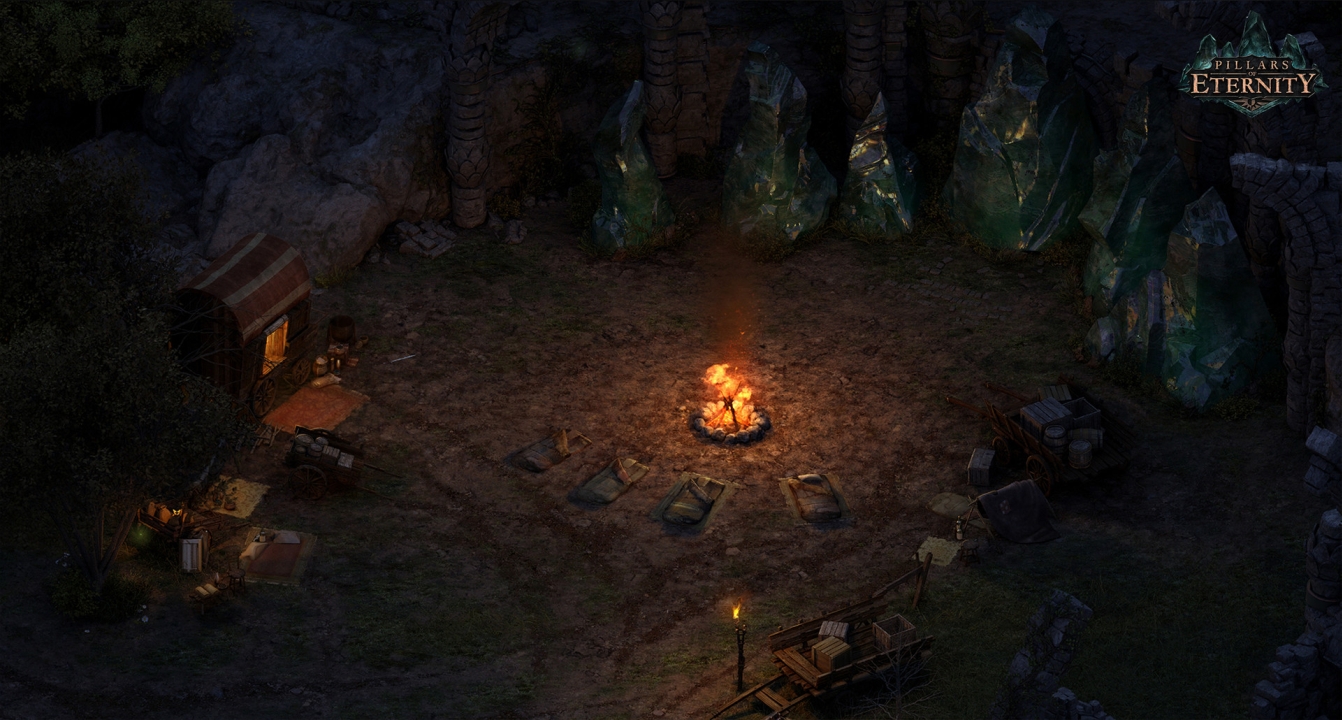
It might feel like running around Dyrwood, finding inns, selling equipment, and restocking your supplies is a bit boring, but Obsidian has again streamlined the process efficiently. Pillars of Eternity is a game about exploration and discovering every inch of the map to find the hidden enemies and treasures, but after you’ve done that, the process speeds up considerably. Once you have discovered a location you can always fast travel at the expense of in-game time. Also, if you are retracing steps or need to get across the map in a hurry, you can set the game to double-speed, moving your characters quickly to their intended location. In this way, Pillars of Eternity is both a slow game about exploration and discovery, but not a boring game where you have to watch your characters trudge on across the screen after the map is clear of foes.
Unfortunately, like many other Obsidian games, Pillars of Eternity suffers from its share of bugs. While I wasn’t affected by anything game breaking, I had a number of issues that would force me to quit my game and load again. A couple of times my animal companions would disappear, or the effects of a spell cast by an ogre wouldn’t go away until I reloaded; a few times I got stuck on loading screens, and lost a couple of passive abilities when I double clicked on armor - suffice it to say, I experienced a number of problems. I often had a litany of save files to choose from to make sure I would never get stuck in a broken game state - and I would suggest anyone who plays to do the same - but it’s upsetting to see such a great game be plagued with these kinds of issues. Of course, Obsidian is working on patches to resolve these bugs; let’s hope they come quickly.
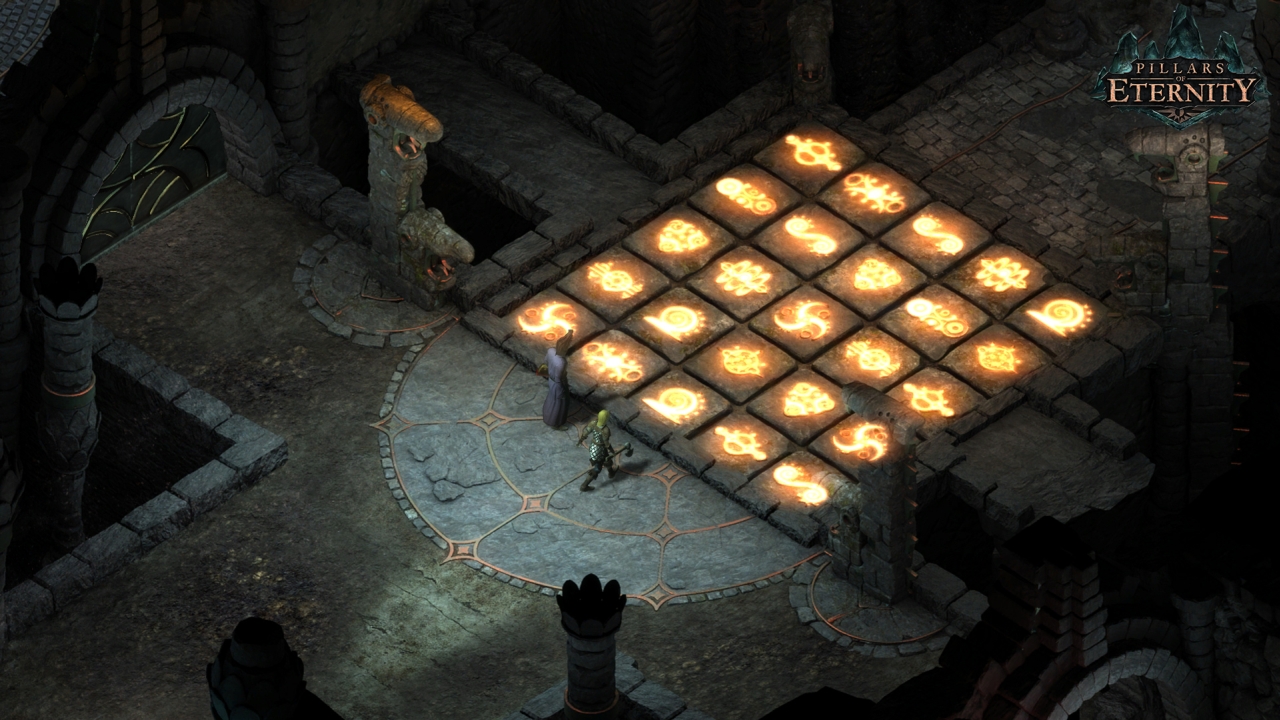
While we’re discussing technical issues, there’s one spot where Pillars really shows its budgetary constrictions and it’s in the voice acting. The delivery itself isn’t awful, but certain dialogue choices were never recorded, meaning there are entire paragraphs of voice over work missing in the middle of conversations. It’s jarring, as you have to keep switching between being immersed in the voice work and reading the next paragraph yourself.
Despite some technical issues though, Pillars of Eternity is a true home run for Obsidian. Its story is weighty and interesting, the characters are complex and fun, the world is rich and creative. The game weaves a compelling narrative and doesn’t water itself down for players. Adding to this are the combat mechanics that rely on strategy and intelligence, but won’t leave you confused and frustrated. Pillars of Eternity is a modern-day RPG with old school sensibilities. It carries the spirit of a niche genre, but doesn’t feel beholden to its ideas. Sure, it plays much like the RPGs of old, but it gently streamlines the mechanics into something that doesn’t require a handbook to play. It is a faithful return to core RPG elements, but still adds ripples to the formula to avoid being predictable. Whether you consider yourself a diehard fan of the cRPG genre or merely enjoy a good story of sword and sorcery, Obsidian has crafted something you’re not likely to forget anytime soon.
 Comments
Comments



















